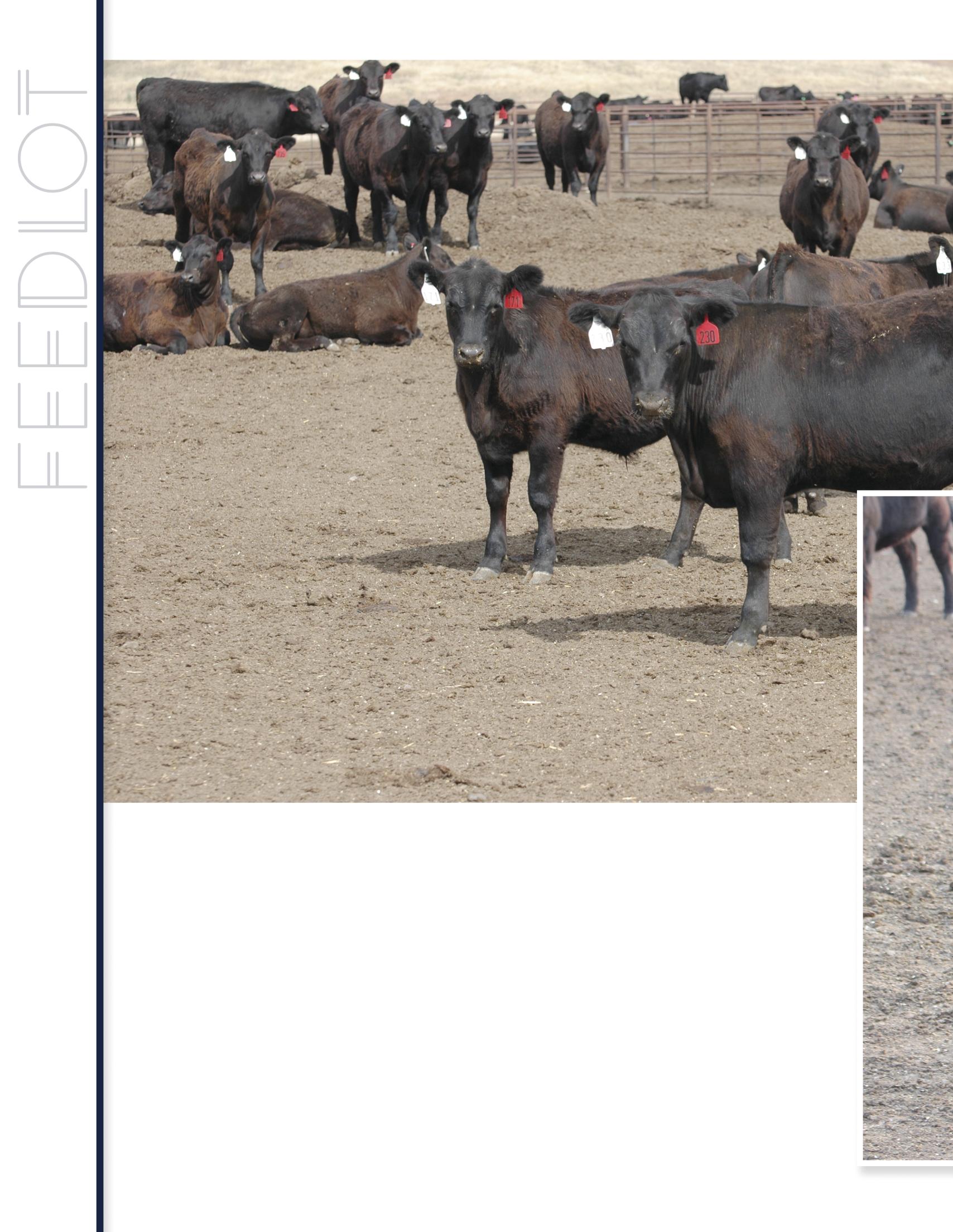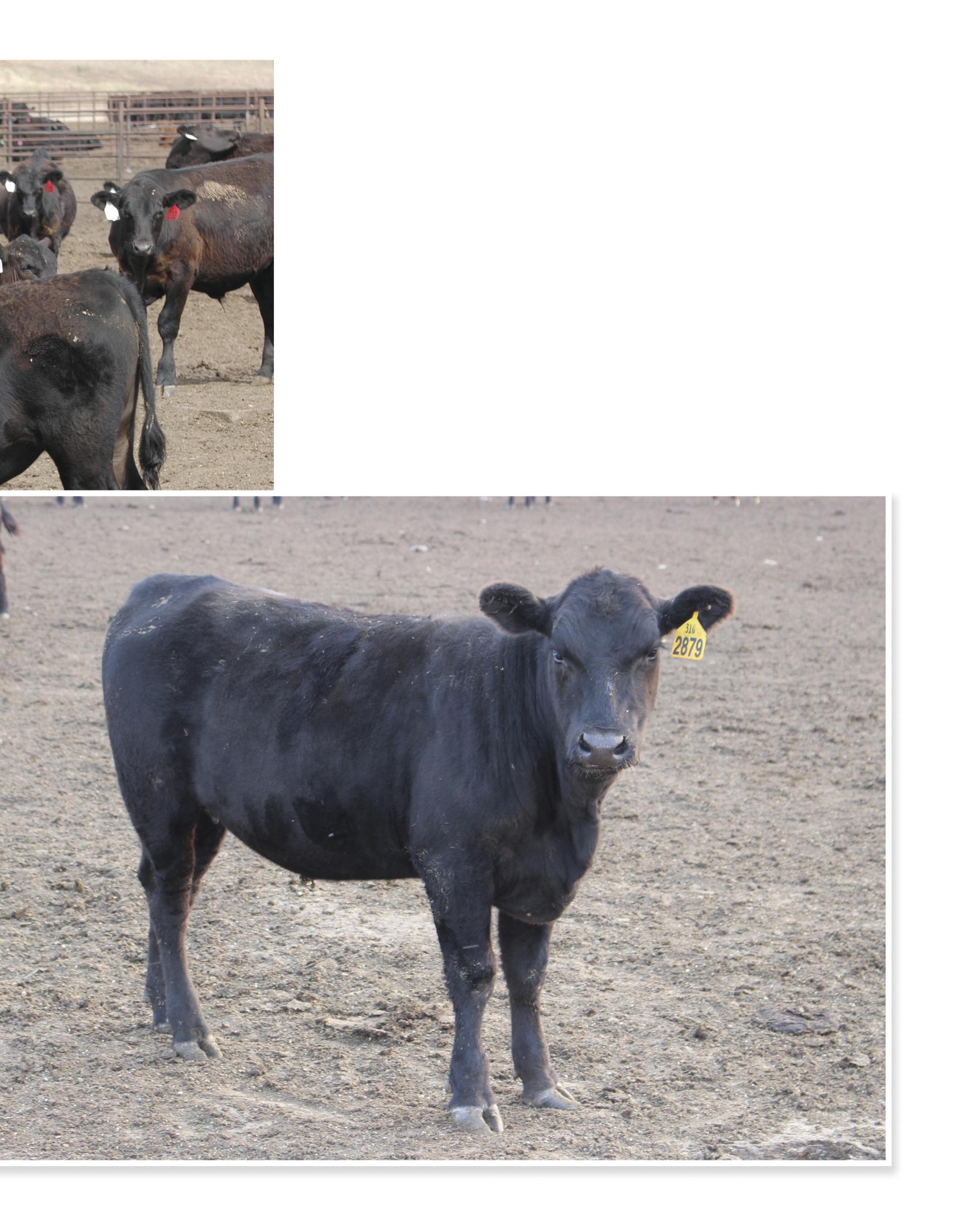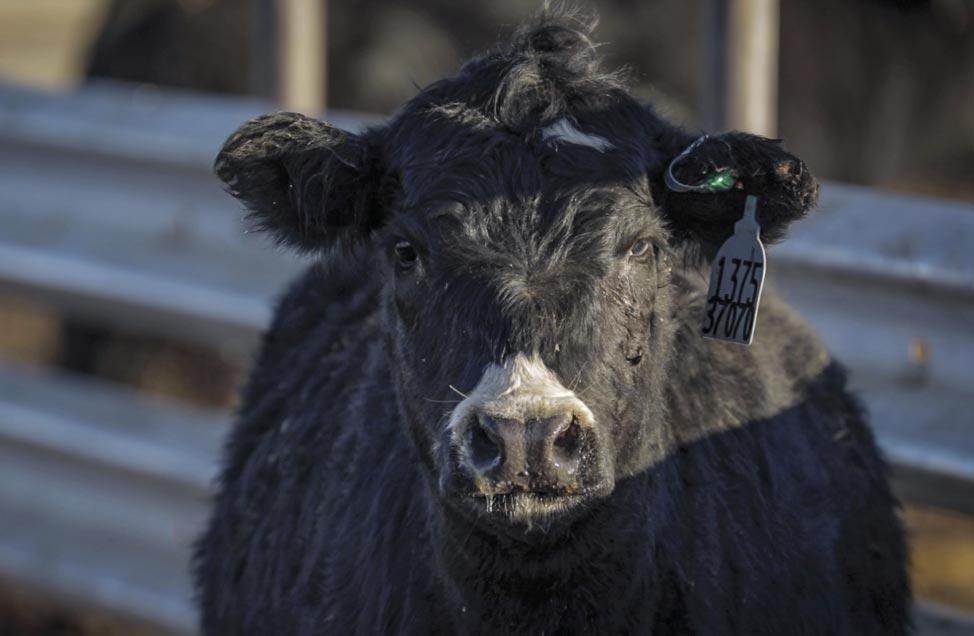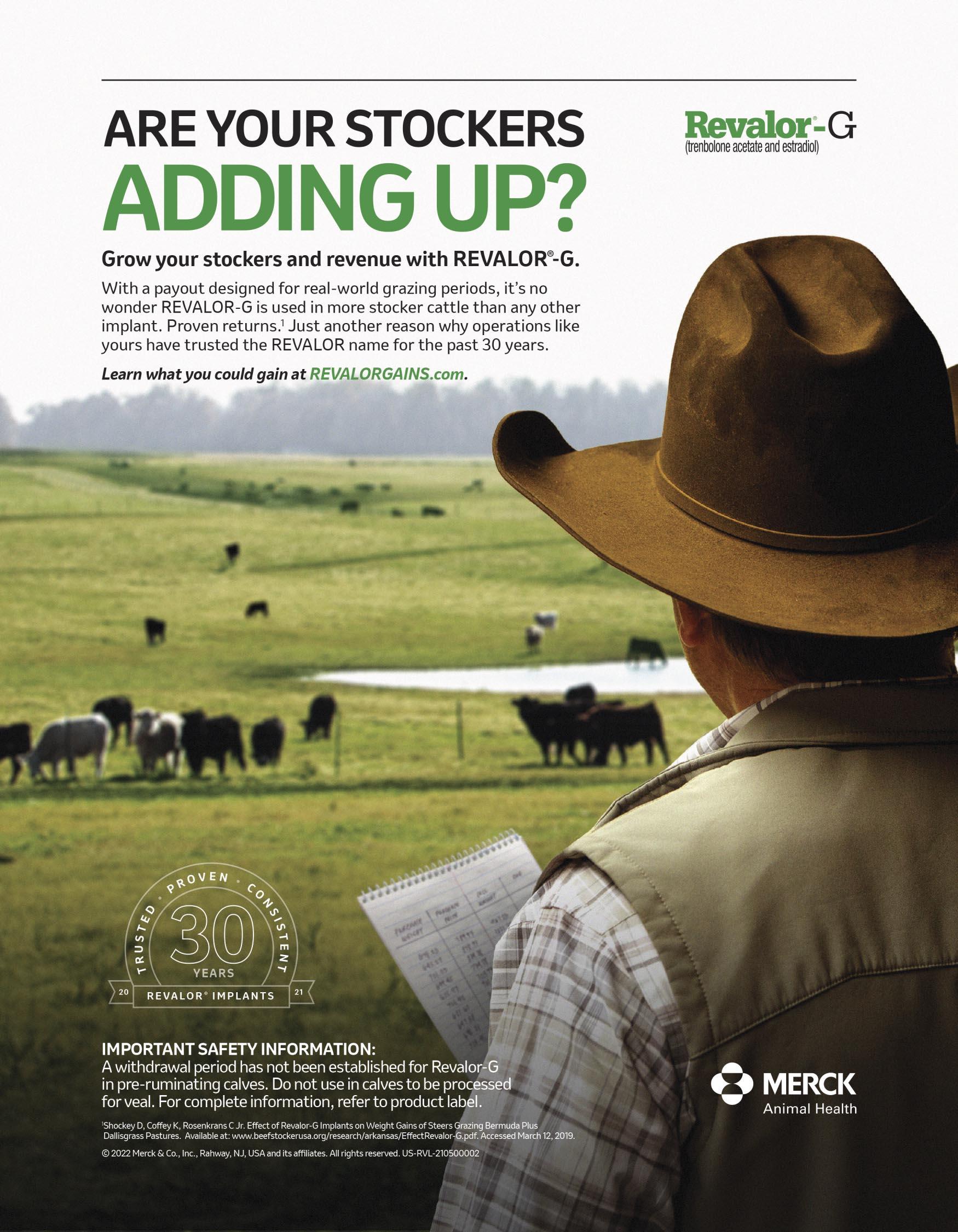
4 minute read
NEW TAG TECHNOLOGY DETECTS SICK CATTLE EARLIER, MORE ACCURATELY
By Jason Nickell, D.V.M., Ph.D., DACVPM, Director of Insights and Outcomes, Merck Animal Health
How much time and labor do you spend looking for sick cattle in your herd or feedlot? How early and accurately are sick cattle identified?

Identifying sick cattle early in the disease process is an often-difficult task, even for skilled pen riders.
Cattle are prey animals. Their natural defense mechanism is to appear healthy, even when sick. That is why a sick animal will often look alert and conceal signs of sickness if it knows it is being watched. By the time an animal appears sick, it usually is several days into the disease process.
The SenseHub® Feedlot system is a new, automated health detection technology designed to aid cattle feeders in identifying sickness earlier and more accurately compared to visual inspection of the cattle alone.

The technology features an illuminating electronic ear tag that makes it easy to identify and sort cattle needing attention with less labor and minimal disruption to the other animals. The ear tag tracks behavioral and biometric data to monitor the health of each animal. Body temperature is captured by an infrared thermistor, and a built-in accelerometer measures animal activity.
The tags are reusable up to three years. The hardware is very minimal. It consists of the ear tag, an antenna placed strategically on-site and a gateway where the data is collected, stored and sent to a data platform. The system has a range of up to two miles.
Using collected data, SenseHub Feedlot applies proven machine learning algorithms to identify individual calves that vary from baseline norms, i.e., outliers. The caregivers receive a daily pull list on their mobile device and/or computer that includes individual animals identified by the system. After an animal is pulled, the caregiver provides further assessment and determines the cause – BRD, lameness or whatever the issue may be – and provides appropriate treatment.
Although developed for feedlots, SenseHub Feedlot brings the same benefits to backgrounding and stocker operations.
Research compares health detection system versus conventional pen riding
Clinical research at an Oklahoma feedyard was conducted to estimate the value of an automated feedlot health detection system compared to conventional pen-riding practices.1
In the study, 2,542 beef heifers averaging 567 pounds were enrolled; 18 pens per treatment group with approximately 71 head per pen.
Cattle were procured by standard industry means and transported to a commercial feedlot in Oklahoma. All calves were processed with the same product regimen and randomly allocated to either the SenseHub Feedlot (SHF) group or the pen rider (PR) group.
Trained pen riders were assigned to the PR group, while separate study personnel were allocated to the SHF group. Because bovine respiratory disease (BRD) is the most prevalent disease syndrome in U.S. feedlot production systems and cattle are very adept at concealing clinical signs of disease, it was the focus of this study.
The case definition in the PR group consisted of an industry-accepted method – seeing clinical signs followed by a rectal temperature cutoff – while cattle in the SHF group were pulled if the system alerted study personnel to a potential issue.
Study results
Up through 60 days on feed, compared with traditional PR observation group, the SHF technology displayed:
• A reduction in days on feed at the time of first BRD diagnosis
• A reduction in rectal temperature at the time of first BRD diagnosis
• A reduction in overall mortality
• A reduction in BRD mortality
• A reduction in removals
• An improvement in BRD treatment success
• A reduction in fallouts (mortality + removals)

Model-adjusted* means and standard error of the means (SEM) for the 60-day health outcomes among auction-market derived beef/beef-cross heifers in one Oklahoma feedlot.
* Mixed models with a random effect to account for the lack of independence among blocks
¥ Due to statistical difference in incoming body weight between the two treatment groups, this variable was used as a covariate for the remainder of the models
‡ Calves treated for BRD that did not require additional BRD therapy, were not removed, and did not die
† This estimate reflects cattle that were removed but had not died up through 60 days on feed
** Mortalities + removals
• A reduction in the number of pens entered per day to observe and possibly remove calves for closer inspection
By 60 DOF, the SHF group displayed (Table 1):
• A reduction (P ≤ 0.01) in days on feed to first BRD treatment (13.9 days [± 0.6 days] vs 16.3 days [± 0.6 days]) compared to the PR group
• A reduction (P≤ 0.01) in rectal temperature at first BRD treatment (104.2 ˚F [± 0.05 ˚F] vs 104.9 ˚F [± 0.05 ˚F]) compared to the PR group
No differences (P>0.05) were observed between the two groups for BRD morbidity and BRD retreatments, however, the SHF group displayed:
• A decrease (P≤ 0.05) in overall mortality (3.1% [± 0.7%]) compared to the PR group (4.5% [± 0.9%])
• A reduction (P=0.06) in BRD mortality (3.0% [± 0.6%]) compared to the PR group (4.3% [± 0.9%])
• A reduction (P=0.10) in removals (3.7% [± 0.6%]) compared to the PR group (5.0% [± 0.8%])
• A reduction (P<0.01) in overall fallouts (mortalities + removals) (6.8% [± 1.1%]) compared to the PR group (9.6% [± 1.4%])
Pen riders were required to enter each of the pens in the pen rider group, while caretakers of animals in the SHF group only entered a given pen if alerted by the system. The average number of pens entered to monitor cattle health on any given day was reduced (on average) by 71% in the SHF group (5.3 pens/day) compared to the PR group (18 pens/day).
Retention/functionality of the SHF tags was 98.3% during the first 60 DOF.
Early detection equals better outcomes
In this study, although monitoring cattle with SHF technology resulted in more animals treated for BRD, overall BRD mortality and fallouts were reduced. This study will proceed to closeout with a final report issued thereafter.
Improvements and innovation in animal monitoring are allowing producers to make more informed therapeutic decisions. Using SenseHub Feedlot enables early intervention in cattle health issues and helps remove some of the guesswork. The result is animals can be pulled and treated more quickly for better animal well-being and health outcomes.
References:
1. Comparison of SenseHub Feedlot versus conventional human pen-riding methods in a U.S. feedlot: An interim report. 2021. Data on file.
Jason Nickell, D.V.M., Ph.D., DACVPM, is director of insights and outcomes for Merck Animal Health. Dr. Nickell earned his D.V.M. degree from the University of Missouri-Columbia. After four years of mixed animal practice, he pursued a Ph.D. in Epidemiology at Kansas State University.
Dr. Nickell is a Diplomate of the American College of Veterinary Preventive Medicine and is a member of the American Veterinary Medical Association, the Missouri Veterinary Medical Association, the Academy of Veterinary Consultants, the American Association of Bovine Practitioners and the Association of Veterinary Epidemiology and Preventive Medicine. He is also the past AABP liaison for the Council for Agricultural Science and Technology (CAST).











